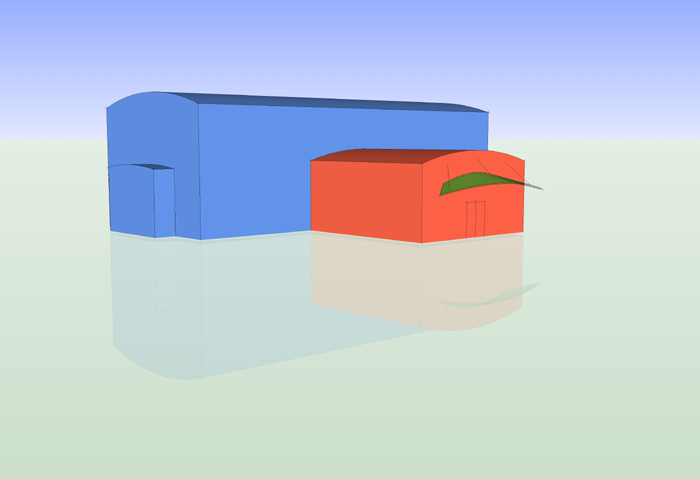Mirror or Reflection.
-
Here is a quick tip I learned years ago.
This Thread sparked my memory.When you want a reflection either on a wet ground or from an actual mirror just "flip" or "mirror" your geometry and place it accordingly.
This first image I mirrored the building and then moved it just slightly so it was not obvious they were touching.
Then I made sure the ground transparency was pretty dense.
This second one I mirrored just a portion of the room and made the glass texture about 90-95% transparent.
And yes I know, the door has no handle

The only drawback is that you are adding more geometry. However for a quick effect it is nice.
You can discard the copy after you generate your shot and carry on.

-
Indeed a good tip and nice effects can be achieved.
A while ago I played around with kephalos' model (I posted his render in the gallery referencing to the original post in the Hungarian forum here).Here are some shots of the straight SU output:


This last one is a bit weird with the shadows mixing with the "reflections"

-
Thats very cool. great model too.
( I love those sails)
-
You can download the model from the Hungarian forum if you wish - just poor guy didn't use components at all so the whole model is about 20 Mb!

Also he made the saild "thick" (double faced) so that it can be properly rendered. With your skills, Pete, I guess you could make some beautiful renders of it (the bow of the hull is a bit low poly though). -
I folks.
If you make a component of the whole model, you can use a flipped copy of it for the reflection. That way, any change will automatically be reflected (appropriate word choice
 ) in the reflection. This will also reduce the file size.
) in the reflection. This will also reduce the file size.Just ideas.
-
Great tip,
-
I use this method frequently when I want to show two views of something in the same image. The "mirror frame" and surface aren't required but I find that they help to communicate that the viewer is looking at a mirrored view. Here are a couple of examples.


Advertisement







